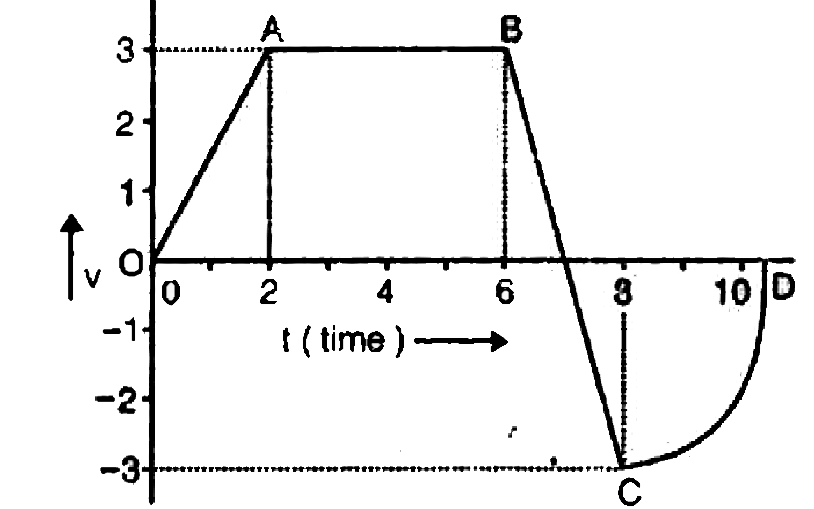Rectilinear motion
Step by step video solution for Rectilinear motion by Physics experts to help you in doubts & scoring excellent marks in Class 12 exams.
Updated on:21/07/2023Similar Questions
Boojho was riding in his bicycle along a straight road. He classified the motion of various parts of the bicycle as (i) rectilinear motion, (ii) circular motion and (iii) both rectilinear as well as circular motion. Can you list one part of the bicycle for each type of motion? Support your answer with reason.
View SolutionA plot of velocity versus time for a body in rectilinear motion is as shown in the figure.indicate whether acceleration is positive, negative , zero , variable or constant in the region OA, AB, BC and CD.Calculate the distance described up to the point C.What is the displacement up to point C ?

View Solution
Knowledge Check
The particle moves with rectilinear motion given the acceleration-displacement (a-S) curve is shown in figure, determine the velocity after the particle has traveled 30 m. If the initial velocity is 10m/s
 A10m/sB40m/sC20m/sD60m/s
A10m/sB40m/sC20m/sD60m/sFor a particle under going rectilinear motion with uniform acceleration, the magnitude of displacement is one third the distance covered in some time interval. The magnitude of final velocity is less than magnitude of initial velocity for this time interval. Then the ratio of initial speed velocity to the final speed for this time interval is :
A√2B2C√3D3Statement 1: A charged particle undergoes non-rectilinear motion in a constant magnetic field. The only force acting on the particle is the magnetic force. Then kinetic energy of this particle remains constant but momentum of the particle does not remains constant.
Statement 2: A force that always acts on the particle in direction perpendicular to its velocity does no work on the particle. But whenever a force acts on the particle, momentum of the particle does not remains constant.AStatement-1 is true, Statement-2: is true, Statement-2 is a correct explanation for Statement-1.BStatement-1 is true, Statement-2: is true, Statement-2 is NOT a correct explanation for Statement-1.CStatement-1 is true but statement-2 is falseDStatement-1 is false, Statement-2 is true
As given in the acceleration displacement (a-S) curve the particle moves in the rectilinear motion: Determine the velocity after the particle has traveled 20 m if the initial velocity is 10 m/s. a(m/s) 10 S(m) 10 20
View SolutionColumn AColumn BA.cicular motiona.Vechicle crossing over a fly-over bridgeB.Rectilinear motionb.One to-and-fro-motionC.Curvilinear motionc.Distance-time graph is a straight lineD.v−uad.100cmE.Constant speede.Time (t)F.Oscillationf.A spinning topG.The length of a seconds pendulum(takingg=10ms−2)g.Coin moving over a carrom board
View SolutionA bar of mass m resting on a smooth horizontal plane starts moving due to the force F=mg/3 of constant magnitude. In the process of its rectilinear motion the angle α between the direction of this force and the horizontal varies as α=as, where a is a constant, and s is the distance traversed by the bar from its initial position. Find the velocity of the bar as a function of the angle α.
View SolutionA block of mass m resting on a smooth horizontal plane starts moving due to a constant force F=mg/3 of constant magnitude. In the process of its rectilinear motion the angle θ varies as θ=λs, where λ is constant and s is the distance traversed by the block from its intial position. Find the velocity of the block as a function of the angle θ. Also show that the block will never lose contact with the ground.
View Solution
Fig. shows thre velocity versus time curves for a particle in rectilinear motionalong a horizontal line. In each case, find the displacement of the particle over the time interval 0≤t≤4, and explain what it tells you about the motion of the particle.
View Solution